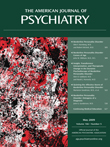The Lonely American: Drifting Apart in the Twenty-First Century
This intriguing and well-written book raises serious concerns about growing social isolation in the United States. The married authors, psychiatrists and psychoanalysts, have written previous books on Overcoming Loneliness in Everyday Life and on Marriage in Motion . They weave together a range of observations that underscore their arguments. The 2004 General Social Survey at Duke found nearly one-fourth of those sampled said they had not talked about anything important with a single person in the previous 6 months. This was a three-fold increase from 20 years earlier. Further, since 1940, the proportion of one-person households in the U.S. has risen from 7% to 25%.
The authors blend such data with cogent dynamic formulations to explain what is going on. They posit a core conflict between our wish to connect and our wish to be free—“People in our society drift away from social connections because of both a push and a pull. The push is the frenetic, hypernetworked intensity of modern life. The pull is the American pantheon of self-reliant heroes who stand apart from the crowd” (p. 11). Since pioneer days, Americans have idealized the image of the lonely hero, but “Great ideals can be used to hide ordinary failings. The inspiring ideal of the self-reliant outsider can supply a heroic gloss for a decision to give up on relationships” (p. 192). Wisely, they conclude that “There are times in all our lives when we each need a little loneliness....It comes down to a question of balance. As a country, we have lost our balance” (p. 193). They therefore cite—and observe—Aristotle’s golden mean, which itself borrows the maxim on the Temple of Delphi: “Nothing to excess.” They note that “We all feel that we will be more respected if we seem frightfully busy” (p. 22). A schizophrenic patient told me, “The key to being accepted in society is to have an expensive time-piece, and to keep looking at it.”
The book summarizes the harmful effects of feeling left out (including for the oedipal child, who feels left out of the parents’ intimacy). While admitting that “evolutionary psychology has produced a mixture of profound insights and whimsical speculations” (p. 63), they make a convincing case for biological aspects of our profound need for attachment, from birth through the rest of our lives. Language (actually, gossip) may have evolved to replace the grooming behavior of other primates, and thus bind individuals to larger groups. Our distress about feeling left out is partly driven by the evolutionary role of belonging to a group in order to survive. One way we maintain our attachments is to suppress critical reactions to our attachment objects. fMRI research shows that romantic love selectively activates some brain areas and suppresses others. Our cognitive processing gets distorted, based on whether the other person is or is not a member of our group. “We tend to forget the bad things that fellow group members do and remember the good things” (p. 67), enhancing the value of remaining an insider. By contrast, social exclusion increases aggression and substance abuse, causes self-defeating behavior, leads to cognitive decline, and jeopardizes physical health and longevity.
The book portrays an overextended typical family, suffering from too little downtime, too little sleep, and too little parental intimacy (so what does that oedipal child have to feel jealous about?). The authors warn that parents may cope with social isolation by turning to their children for companionship, subverting their role as an authority, and making the children’s teachers’ jobs more challenging. Our current recession highlights the role of economic necessity as one inescapable factor in couples who both have to work such long hours that their marriages suffer. The authors might have cited the inspiring example of the Latino immigrant community, whose strong family bonds lead them to send home a large portion of their hard-earned wages; or the generosity of the lowest income Americans, who donate a higher percentage of their meager income to charity than do wealthier Americans. The authors focus so exclusively on the middle class that they overlook such data that suggest greater wealth contributes to the very social isolation they eloquently decry.
The authors wisely note the limitations of electronic communication, including telephone psychotherapy sessions. The Internet enriches lives when it supplements rather than supplants face-to-face interactions. I agree with their description of Alcoholics Anonymous as “probably the most reliable antidote to loneliness ever invented in this country” (p. 152). I wish they had also acknowledged the crucial companionship that pets provide to many otherwise lonely people. They offer a sharp critique of the pharmaceutical industry"s “pathologizing of loneliness” (p. 172) in its direct-to-consumer ads portraying loneliness as a psychiatric disorder to be treated with drugs while underemphasizing psychosocial interventions, including psychotherapy.



